|
|
|
Sort Order |
|
|
|
Items / Page
|
|
|
|
|
|
|
| Srl | Item |
| 1 |
ID:
161001
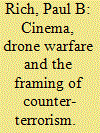

|
|
|
|
|
| Summary/Abstract |
The study of the cinematic representation is extremely useful in framing of counter-terrorism policies, whether in the US or elsewhere. This paper examines cinema’s interest in drone warfare as well as the lives and personalities of drone pilots. It argues that drone warfare suffers a considerable image problem that has been brought out in several recent features and it is unlikely that any major cinematic myth of drone warfare will easily develop, certainly in comparison to myths concerning special forces and special operations.
|
|
|
|
|
|
|
|
|
|
|
|
|
|
|
|
| 2 |
ID:
085278
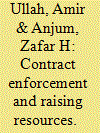

|
|
|
| 3 |
ID:
162460
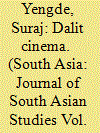

|
|
|
|
|
| Summary/Abstract |
This article offers introductory remarks on the position of the Dalit in Indian cinema. It starts with the observation that the Indian film industry is an inherently caste-based, biased, mechanised product of technological industrialisation in which Dalit inclusion is not a moral concern. The mainstream film industry in India delivers the desires and principles of market and society by excluding a Dalit framework outright—a problem now being addressed by the entry of an explicitly Dalit cinema. By briefly looking at two films, Fandry (2013) and Sairat (2016), both written and directed by Dalit film-maker Nagraj Manjule, I offer a critical reading of ‘Dalit Cinema’. Taking the work of Manjule, a maverick film-maker who is establishing a new discourse of Dalit-centred socio-culturism, I demonstrate the extent to which caste narratives are absent in the Indian film industry.
|
|
|
|
|
|
|
|
|
|
|
|
|
|
|
|
| 4 |
ID:
123063
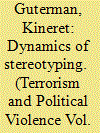

|
|
|
|
|
| Publication |
2013.
|
| Summary/Abstract |
This article considers popular ways of representing terror activists, and the metamorphoses that approaches to representation in the American media have undergone. A part of the article deals with terrorism in the media over time, common stereotypes, and how they affect the representation of Arabs and Muslims. The article then discusses Sleeper Cell (2005), a mini-series which focuses on a Jihad terror group. The article addresses questions including: How are Arabs and non-Arab Muslims portrayed in the series? Can a real change be observed over time in the method of portraying them? Twentieth-century historical considerations precede the pointed topical discussion.
|
|
|
|
|
|
|
|
|
|
|
|
|
|
|
|
| 5 |
ID:
124924
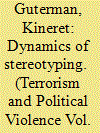

|
|
|
|
|
| Publication |
2013.
|
| Summary/Abstract |
This article considers popular ways of representing terror activists, and the metamorphoses that approaches to representation in the American media have undergone. A part of the article deals with terrorism in the media over time, common stereotypes, and how they affect the representation of Arabs and Muslims. The article then discusses Sleeper Cell (2005), a mini-series which focuses on a Jihad terror group. The article addresses questions including: How are Arabs and non-Arab Muslims portrayed in the series? Can a real change be observed over time in the method of portraying them? Twentieth-century historical considerations precede the pointed topical discussion.
|
|
|
|
|
|
|
|
|
|
|
|
|
|
|
|
| 6 |
ID:
124729
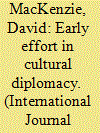

|
|
|
|
|
| Publication |
2013.
|
| Summary/Abstract |
The Canadian Co-operation Project (CCP) was one of the more unusual episodes in the economic and cultural relationship of Canada and the United States. Conceived between the federal government and the Hollywood film industry, the 1948 agreement called on Hollywood to produce more films in Canada and to make efforts to promote American tourism in Canada. The paper argues that the CCP was less the surrender to Hollywood than is generally understood and more an early example of cultural diplomacy in which the Canadian government used cultural relations with the United States for its own ends, primarily the promotion of tourism in Canada
|
|
|
|
|
|
|
|
|
|
|
|
|
|
|
|
| 7 |
ID:
113860
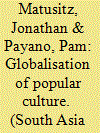

|
|
|
|
|
| Publication |
2012.
|
| Summary/Abstract |
This article examines significant evidence of recent Bollywood influence on the Western movie industry, particularly Hollywood, and explores the implications of such developments in the context of globalisation. Within the ongoing globalisation of entertainment, a process that does not automatically lead to cultural Westernisation and uniformisation, Bollywood has by now become both a symbol of Indian cinema's circulation all over the world and the embodiment of non-monolithic globalisation. Bollywood is evidently not a homogenising influence that forces non-Indian cultures to embrace its cinematographic or musical norms and practices. Rather, it creates new hybrids. The article offers a framework for explaining the growing cultural and economic changes and movements of such non-hegemonic spreading of popular culture and identifies future agenda for research.
|
|
|
|
|
|
|
|
|
|
|
|
|
|
|
|
| 8 |
ID:
079072
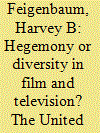

|
|
|
|
|
| Publication |
2007.
|
| Summary/Abstract |
In October 2005 UNESCO produced its Universal Declaration on Cultural Diversity. This was largely a response to the worries of countries, especially in Europe and not least of which France, which feared the damaging effects to their cultures if trade in entertainment products remained too one-sided. Generally the argument of this paper is that while initial tensions between the United States and Europe were motivated by the usual commercial concerns, Europeans were increasingly worried about the cultural impact of this commerce. The Japanese, however, have not been nearly so concerned as the Europeans about becoming 'Americanized'. This lack of tension between the United States and Japan in the area of film and television is due to several factors. First, there is a complementarity between American entertainment and the Japanese electronics industry. Second, the Japanese are major players in some aspects of the entertainment industry, most especially in the area of animation, and they are especially influential in Asia. Finally, issues of cultural conflict between the United States and Japan are simply less salient to Tokyo than those which characterize Japan's relations with its Asian neighbors
|
|
|
|
|
|
|
|
|
|
|
|
|
|
|
|
| 9 |
ID:
118400
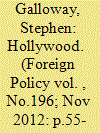

|
|
|
| 10 |
ID:
172498
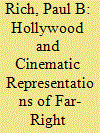

|
|
|
|
|
| Summary/Abstract |
This article argues that a major influence on the imagery of far-right terrorism in the United States derives from cinema. Most of the feature films released by Hollywood on this theme have been rather superficial and have rarely strayed beyond portraying right-wing terrorist movements in popular genres such as westerns, crime thrillers, and romantic melodramas—although not, interestingly, action adventure movies, so often the terrain for narratives involving external terrorist movements. The article contends that U.S. far-right terrorism before the 1990s was anchored in the films depicting the Ku Klux Klan; more recently, a few films have begun to engage with “new” forms of far-right terrorism involving skinheads, neo-Nazis, and “patriot” militias. Overall, remarkably few films released by Hollywood have engaged with the structure of far-right terrorist movements or the motivations of their followers. This has ensured that the movements remained shadowy organizations run, for the most part, by two-dimensional and stereotypical characters.
|
|
|
|
|
|
|
|
|
|
|
|
|
|
|
|
| 11 |
ID:
164186


|
|
|
|
|
| Summary/Abstract |
E. Y. Harburg, the lyricist behind The Wizard of Oz, remains one of the most important songwriters blacklisted during the Cold War. His removal from Hollywood features in the 1950s denied moviegoers a distinct American voice whose lyrics mixed humor and entertainment to champion liberal causes. From 1944–1972, Director J. Edgar Hoover and the Bureau’s major field offices investigated Harburg. His declassified FBI file shows institutionalized incompetence in the way the Bureau went about writing reports, evaluating evidence, making conclusions, and conducting counter-intelligence work. Harburg’s story illuminates the battle between the left and right to shape popular culture during the Cold War. Hoover and Harburg held opposing views on politics, religion, economics, and race. Yet both men shared a fervent faith in popular culture’s capacity to transform America. Together they vied to remake the nation according to their own distinct visions – Hoover’s fear of declension stood in contrast to Harburg’s hope for radical progress.
|
|
|
|
|
|
|
|
|
|
|
|
|
|
|
|
| 12 |
ID:
084826
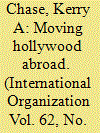

|
|
|
|
|
| Publication |
2008.
|
| Summary/Abstract |
Theories of trade and domestic politics have been applied extensively to manufacturing and agriculture; the political economy of trade in services, however, remains poorly understood. This article examines how the "offshoring" of services segments labor markets and places low-skilled and high-skilled labor at odds on trade issues. Drawing from a case where trade has been politically contentious of late-motion picture services in the United States-the article finds that offshoring can aggravate wage inequality, creating incentives for low-skilled workers to demand policy remedies. Consistent with this expectation, an ordered probit analysis of labor-group lobbying reveals that low-skilled occupations in motion picture services were most likely to support countervailing duties and Section 301 action against productions filmed abroad. The findings suggest that when services are tradable, labor-market cleavages are not purely factoral or sectoral, but occupational. This new politics of trade in services has important implications for trade policy in the United States and multilateral rulemaking in the World Trade Organization.
|
|
|
|
|
|
|
|
|
|
|
|
|
|
|
|
| 13 |
ID:
142614
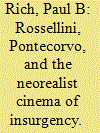

|
|
|
|
|
| Summary/Abstract |
This article examines the tradition of Italian neorealism and the importance it has for films depicting guerrilla insurgencies. It looks in particular at the two films by Roberto Rossellini Rome Open City and Paisa as well as the later film by Nanni Loy Four Days in Naples. It then proceeds to locate Gillo Pontecorvo's iconic film The Battle of Algiers within this neorealist tradition and examines the degree to which the director succeeded in continuing the basic traditions of neorealism into the context of the Algerian war of Independence. The article concludes that while this film remains of great interest it should be situated in the period when it was produced and is in many ways radically disconnected from many insurgent movements of the present day.
|
|
|
|
|
|
|
|
|
|
|
|
|
|
|
|
| 14 |
ID:
142611
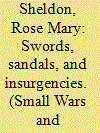

|
|
|
|
|
| Summary/Abstract |
This article explores the question of why so few insurgencies from the ancient world have ever made it onto the big screen. Many of these stories have been made into documentaries, but have been ignored by Hollywood. Even those events that have been made into Hollywood films, like the uprising of Spartacus, do not show any of the successful uprisings, only the defeats. Among the possible reasons may be Hollywood's fascination with big wars and big battles rather than small wars because they are more cinematic. Another reason is that American movies are reluctant to show successful slave uprisings or insurgencies against great powers. In the end, all movies are about the present, not the past, and thus Western bias will side with the imperial power, not the terrorist.
|
|
|
|
|
|
|
|
|
|
|
|
|
|
|
|
| 15 |
ID:
141802


|
|
|
|
|
| Summary/Abstract |
The article identifies an emerging trend in the reconstruction of identities in the Balkans which involves the memorialisation of foreign celebrities, including Rocky Balboa, Tarzan, Bruce Lee, Bob Marley, Tupac Shakur, and Samantha Fox. The article aims to understand the meaning and the purpose of foreign celebrity monuments to the local communities. The findings suggest that the monuments represent radical political statements by emerging civil societies in a process of transition from Yugoslav socialism, 1990s nationalism, and foreign-led liberalisation and democratisation in post-conflict times. The monuments are constitutive in themselves as democratic expressions and examples of citizens performing political acts.
|
|
|
|
|
|
|
|
|
|
|
|
|
|
|
|
|
|
|
|
|